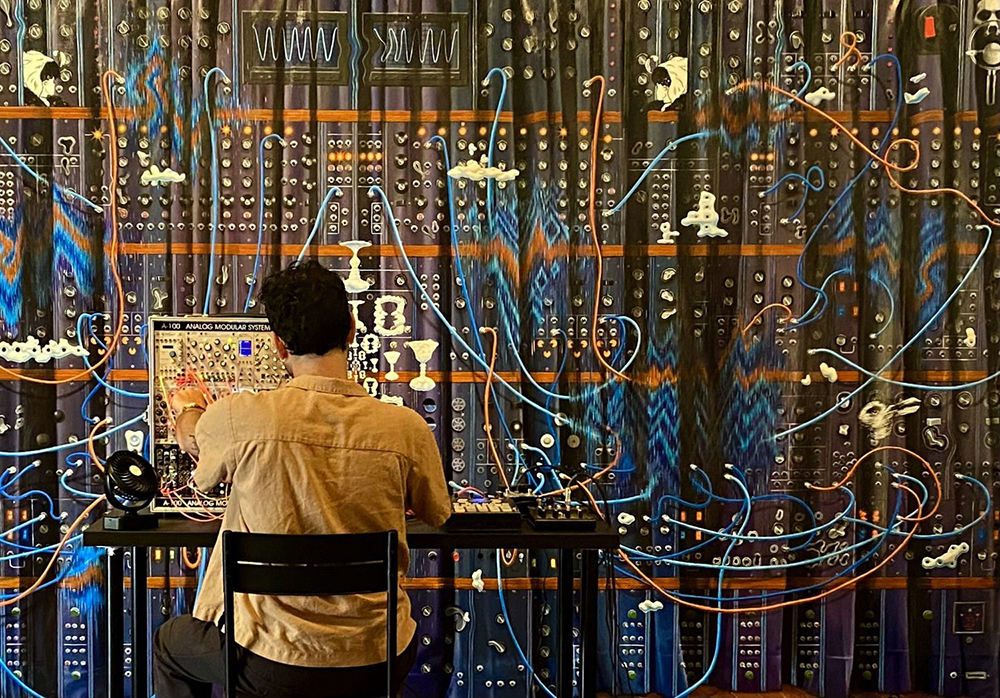Transforming the gallery into a performance space for his installation “Things Thinking,” Brian Cooper constructs an environment for contemplating the ideas of cognitive psychologist Donald D. Hoffman, whose theories posit that our perceptions of the world are mental models or “maps” of reality, rather than actual space, time or material things. Consisting of three sections, the installation includes 13 paintings hung salon-style on one wall; two soft sculptures that function as furniture in the center of the space; and a stage abutted against a grommet-lined trompe-l’oeil painting of a synthesizer shaped like a curtain, suspended on the opposite wall. Throughout the exhibition, Cooper scheduled concerts in which he and other musicians played experimental electronic music on a synthesizer set up on the stage.
Iconographically, the artist sets up a dichotomy between consciousness and physicality. The synthesizer painting is Cooper’s conceptualization of perception: titled Perceptions Delusion (Whoever Felt It Dealt It), it features a blue synthesizer with switches, dials and cords that refer metaphorically to the networks and interactions of our senses—a clever allegory for the brain and all its synapses. By contrast, the group of paintings on the opposite wall explores how consciousness affects our bodies. In the larger examples, Cooper creates biomorphic abstractions made up of elongated, curvy forms that resemble folded-over gym mats, piles of blankets, pencil erasers or tongues, as well as contorted human figures in high-energy activities such as wrestling or sex. The connection to human exertion in these works is reinforced by the fact that several of the biomorphic beings are wrapped in sweat bands or draped with white towels, and their surfaces are covered with liquid droplets that could be perspiration or tears. In the smaller paintings, the “creatures” look like contraptions that hold reams of white paper—a reference to writing, language and thought, byproducts of the mind. Collectively, the paintings are monochromatic, which unifies them as a group. Painted in various shades of rust-red signifying different skin tones, they are also incredibly seductive, as their soft radiant internal lighting establishes an overall sensuous tone.

Brian Cooper, Close Quarters (La Familia), 2023. Courtesy of the artist and Rory Devine Fine Art.
The two sculptures in the center are essentially 3D representations of the forms imagined in the paintings. During the concerts, audiences could sit on them while gazing alternately at the paintings and the performance on stage. In creating a place for simultaneous engagement with sumptuous visual art and immersion in the vibrations of electronic music, Cooper provided an unconventional and inviting vehicle for musing on the nature of being.











Such a great show. The art gives me a slippery feeling in a good way. I feel like we are looking at bodies in some other parallel higher dimension.